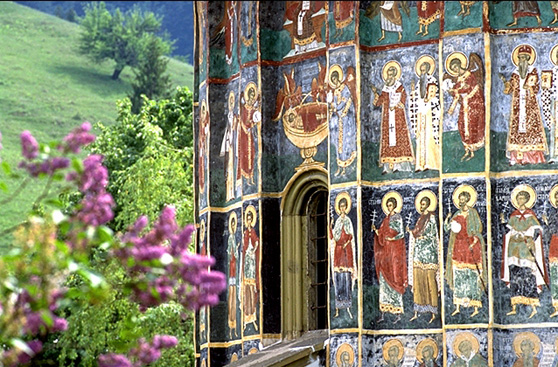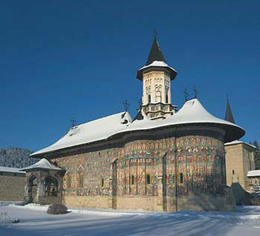
UNESCO has added 17 new sites to the World Heritage List
 |
| Eastern Romanian monastery Sucevita, detail of the façade |
Brasília - The United Nations Educational, Scientific and Cultural Organization (UNESCO) has added 17 new sites to its famous World Heritage List. Among the most notable are the Amsterdam Canals, the Baroque Eggenberg Palace in Graz, southern Austria, and the eastern Romanian monastery Sucevita. UNESCO made the decision on the new entries to the World Heritage List during its meeting in the Brazilian capital.
Other new sites added to the list include the 14 kilometers long Amsterdam Canals, established in the 16th and 17th centuries, as well as historical monuments in the Chinese city of Tengfeng, the bishopric town of Albi in France, the Pacific Atoll of Bikini, where nuclear test explosions were conducted, and the marine area of Papahanaumokuakea around the Hawaiian Islands.
 |
| Eastern Romanian monastery Sucevita |
The eastern Romanian monastery Sucevita has become the eighth monastery from the historical region of Moldavia to be included on the list. Sucevita, like the other monasteries in the region, is characterized by vibrant paintings on its exterior walls from the 16th century.
The World Cultural and Natural Heritage List has also been expanded to include 645 prehistoric paintings carved into rocks in Siega Verde in the autonomous community of Castilla-León, western Spain. In this case, it is also an expansion of an existing entry – the Portuguese valley of the Coa River.
"The sites of prehistoric art in the valley of Coa and Siega Verde represent the most remarkable complexes of Paleolithic art in the open air on the Iberian Peninsula," UNESCO justified its choice.
The World Heritage List has now expanded to include over 900 sites distinguished by their unique natural or cultural significance.
Inclusion on the UNESCO list is always an important economic signal, especially for developing countries. In most cases, the registration of a site on the list leads to an increase in tourist visitation; it also facilitates requests for financial aid and investment.
However, UNESCO simultaneously monitors construction and other interventions at these sites that could lead to their removal from the list.
Among the most famous Czech monuments on the UNESCO list are the historic cores of Prague, Český Krumlov, and Telč. The Czech Republic has a total of 12 sites on the list.
In Brasília, 39 sites are vying for registration on the list, of which 17 have already been expanded by the committee.
The English translation is powered by AI tool. Switch to Czech to view the original text source.
0 comments
add comment










